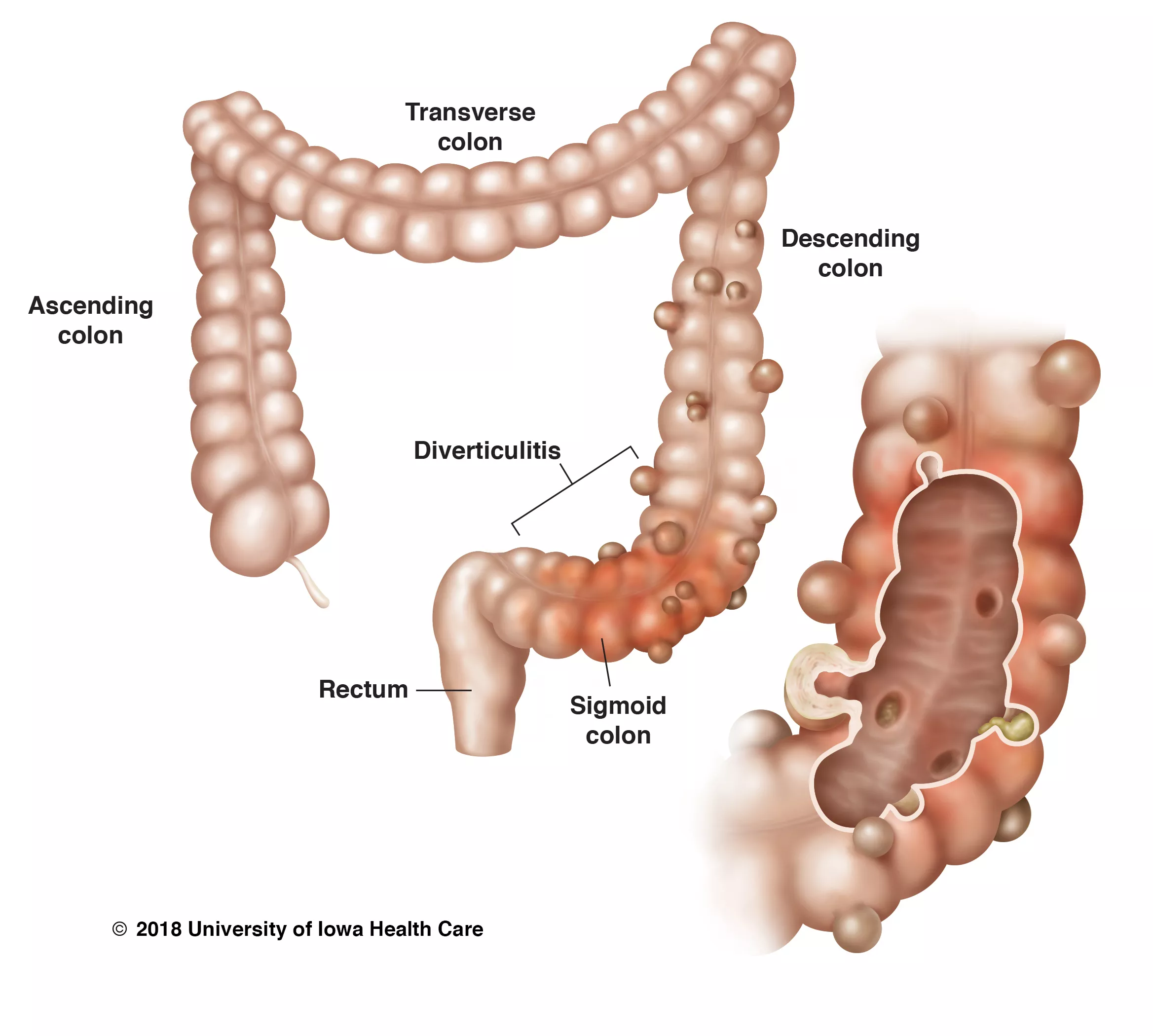Diverticular disease of the colon
What is diverticular disease?
Diverticular disease includes both diverticulosis and diverticulitis.
Diverticula are small herniations in the colon wall. They are caused by weakened areas of the colon. The naturally weakened areas lead to the development of marble-sized pouches that balloon outward.
Developing diverticula is referred to as diverticulosis and is typically a harmless condition. Symptoms of diverticulosis often can go unnoticed. Your first indication of diverticulosis may be from observations your doctor makes of the colon wall during a routine colonoscopy.
When the diverticula become inflamed, this condition is called diverticulitis. Complications of diverticulitis can include repeated infections and development of perforations in the colon wall.

Symptoms
Typically, diverticulosis has no symptoms and can go unnoticed.
Symptoms of diverticulitis can range from mild to severe. They may appear suddenly or gradually over a period of days.
They include:
- Abdominal tenderness and/or pain
- Fever
- Nausea or vomiting
- Constipation
- Diarrhea (less common)
- Symptoms of a urinary tract infection
- Increased urge to urinate
- Burning sensation while urinating
What causes diverticular disease?
Age is the biggest risk factor for the disease, the older you get the more at risk you are to develop diverticula. Diverticular disease is a common condition in older adults, as a majority of those over the age of 70 have the condition. Diverticular disease is also hereditary.
There is no one specific cause, but possible ones include:
- Obesity
- Low fiber diet
- Lack of exercise
For those under 50, diverticular disease is more common in men. For those over 50, diverticular disease is more common in women.
Preventing diverticular disease
- Eat plenty of fiber. The recommended daily intake is 25 grams for women, 20 for those over the age of 50, and 30-38 grams for men.
- Drink plenty of fluids. You should consume at least 64 ounces of fluids daily. Increased fiber intake should be paired with increased fluid intake in order to reap the benefits of a high-fiber diet and avoid discomfort.
- Exercise regularly. Exercising for 30 minutes on most days helps promote normal bowel function.
Diagnosis
Often times pouches on the colon wall may be noticed during a routine colonoscopy or tests such as X-rays. If you are experiencing symptoms of diverticulitis your doctor may use an imaging exam, like X-ray or CT, to help detect abnormalities in the GI tract.
Treatment
If you have diverticulosis, treatment will aim to prevent it from becoming diverticulitis. Treatment for diverticulosis will most likely include a high fiber diet. Foods that are high in fiber include whole grains, fruits, and vegetables.
For uncomplicated diverticulitis, antibiotics and liquid diets can help combat the condition.
More complex cases may require surgery, involving removal of the diseased portion of the colon.